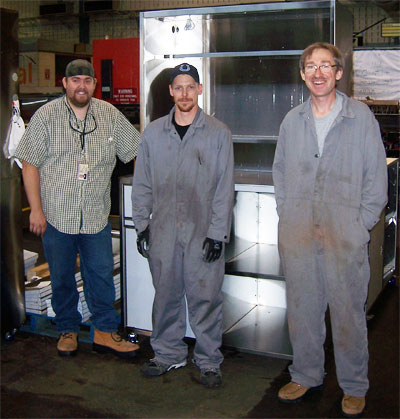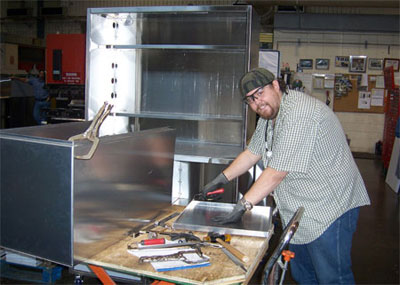
Sheet Metal Worker graduates from College of the North have little difficulty finding employment after graduation. From left, Matthew Jenkins, John Walsh and Steven Day are three graduates employed at the Cape Scott Navy facility in Halifax in the sheet metal field.

Matthew Jenkins of Springdale puts the skills acquired from College of the North Atlantic’s Sheet Metal Worker program to good use at the Cape Scott Navy facility in Halifax.